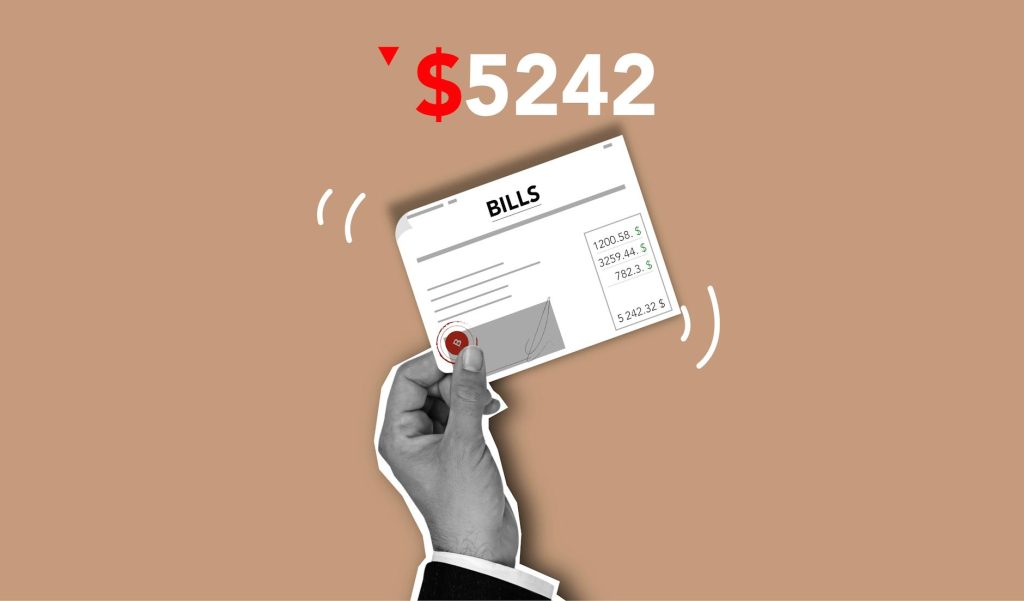
Cracking the Code on Discounts
Getting a handle on discounts can save you a ton of cash. Let’s break down the basics and dive into the different types you might come across.
Discount 101
A discount is just a fancy way of saying “price cut.” It can show up as a flat dollar amount or a percentage off the original price. So, if a jacket costs $100 but you snag it for $80, you’ve scored a $20 discount.
Here’s how to figure out a discount in three easy steps:
- Turn the percentage into a decimal: Move the decimal point two spots to the left. A 20% discount becomes 0.20.
- Multiply the original price by the decimal: This gives you the discount amount.
- Subtract the discount from the original price: Voilà, you get the new price. For example, $100 with a $20 discount means you pay $80.
Need more help with the math? Check out our discount calculation formula or our discount calculator.
Types of Discounts
Discounts come in all shapes and sizes. Knowing the different types can help you spot the best deals. Here are some common ones:
| Type of Discount | What It Means |
|---|---|
| Seasonal Discounts | Deals during certain seasons or holidays to clear out stock. |
| Promotional Discounts | Short-term price cuts to attract shoppers and boost sales. |
| Volume Discounts | Savings when you buy in bulk. |
| Loyalty Discounts | Perks for repeat customers, often based on past purchases. |
| Clearance Discounts | Big markdowns on items being phased out or discontinued. |
Each type has its own game plan, and retailers use them to get you to buy more. Knowing these can help you find the best bargains.
When you’re figuring out discounts, always think about the type you’re dealing with. This can help you save even more.
Calculating Discounts
Knowing how to figure out discounts can save you some serious cash. Let’s break it down so you can easily calculate the discount amount and the final price after the discount.
Converting Discount Percentage
First things first, turn that discount percentage into a decimal. Just move the decimal point two spots to the left. So, if you have a 25% discount, it becomes 0.25. This decimal is your magic number for all calculations.
Determining Discount Amount
Now, let’s find out how much you’re saving. Use this simple formula:
Discount Original Price × 100For example, if something costs $100 and the discount is 25%, here’s how it looks:
| Item | Original Price | Discount Percentage | Decimal Discount | Discount Amount |
|---|---|---|---|---|
| Example Item | $100 | 25% | 0.25 | $25 |
So, you’re saving $25.
Finding Discounted Price
To get the final price after the discount, just subtract the discount amount from the original price. The formula is:
List Price – Selling Price List Price × 100Using our example:
- Original Price: $100
- Discount Amount: $25
The calculation would be:
Discount = List Price – Selling Price = 25 – 22 = 3| Item | Original Price | Discount Amount | Discounted Price |
|---|---|---|---|
| Example Item | $100 | $25 | $75 |
So, the final price you pay is $75.
For more tips and tricks on calculating discounts, check out our free discount calculator extensions. Happy shopping!
Discount Percentage Calculations
Want to save some cash and make smarter buys? Let’s break down how to figure out discount percentages and use them to your advantage.
How to Calculate Discount Percentage
Here’s the magic formula to find out the discount percentage:
Discount % = 3 25 × 100 = 12 %Or, you can use this one:
Discount % = 50 150 × 100 = 33.33 %Let’s say you spot a shirt priced at $25 but it’s on sale for $22. Here’s how you figure out the discount:
1. Find the discount amount:
Discount = List Price × 0.152. Plug it into the formula:
Selling Price = List Price – Discount = 270 – 40.5 = 229.5Discount amount:
Discount Amount = List Price × Discount Percentage 100Formula time:
Net Selling Price = Original Price – ( Original Price × Discount Percentage 100 )Using the Discount Percentage
Once you know the discount percentage, you can figure out the final price. Let’s see how it works with an example.
Say a product’s Manufacturer’s Retail Price (MRP) is $270, and there’s a 15% discount. Here’s how you find the selling price:
Calculate the discount amount:
CF ( 1 + r ) nGet the selling price:
1000 ( 1 + 0.05 ) 3 = 863.84With these steps, you can easily figure out how much you’ll pay after the discount. For more details on the formulas, check out our article on the discount calculation formula or discount rate calculator.
Practical Discount Calculations
Knowing how to figure out discounts can save you some serious cash and help you shop smarter. Let’s break down how to calculate discounts and find the final price of items you love.
Real-Life Scenarios
Imagine spotting a cool gadget for $270 with a 15% discount. How do you figure out the final price? It’s simpler than you think. Just subtract the discount from the original price.
Here’s the formula to find the discount amount:
1000 ( 1 + 0.10 ) 3 = 751.31Using our example:
| Item | List Price | Discount Percentage | Discount Amount | Final Selling Price |
|---|---|---|---|---|
| Gadget | $270 | 15% | $40.50 | $229.50 |
So, the final price is $270 – $40.50 = $229.50 (Cuemath).
Calculating Net Selling Price
To find the net selling price, multiply the original price by the discount percentage in decimal form, then subtract that from the original price. Here’s the formula:
1000 ( 1 + 0.15 ) 3 = 657.52Let’s use our gadget example again:
- Convert the percentage to a decimal: 15% = 0.15
- Calculate the discount: $270 × 0.15 = $40.50
- Subtract the discount from the original price: $270 – $40.50 = $229.50
This way, you know exactly how much you’re saving and what you’ll end up paying. For more details, check out our article on discount calculation formula.
By practicing these calculations, you’ll get better at spotting deals and making smart shopping choices. Happy saving!
Advanced Discount Rate
Getting a grip on advanced discount rates can seriously boost your financial decision-making game. We’ll break down two main ideas: the discount rate in discounted cash flow (DCF) analysis and the weighted average cost of capital (WACC).
Discount Rate in DCF Analysis
In DCF analysis, the discount rate is your tool for figuring out the present value of future cash flows. This helps you decide if an investment is worth it. The goal? To see how much future cash is worth today. If the net present value (PV) is positive, the project looks good; if it’s negative, maybe not so much (Investopedia).
Here’s a simple formula to calculate the present value using the discount rate:
WACC = ( E V × Re ) + ( D V × Rd × ( 1 – T )Where:
- PV = Present Value
- CF = Future Cash Flow
- r = Discount Rate (as a decimal)
- n = Number of periods until cash flow is received
| Future Cash Flow (CF) | Discount Rate (r) | Number of Years (n) | Present Value (PV) |
|---|---|---|---|
| $1,000 | 5% | 3 | $863.84 |
| $1,000 | 10% | 3 | $751.31 |
| $1,000 | 15% | 3 | $657.52 |
This table shows how different discount rates and time periods can change the present value of future cash flows.
Weighted Average Cost of Capital
When you’re checking out a potential project, WACC might be your go-to discount rate. WACC is the average cost a company pays for its capital, whether it’s from debt or equity (Investopedia). Here’s the formula:
Discount Amount = List Price × Discount Percentage 100Where:
- E = Market value of equity
- D = Market value of debt
- V = E + D (total market value of the firm)
- Re = Cost of equity
- Rd = Cost of debt
- T = Corporate tax rate
| Component | Value |
|---|---|
| Market Value of Equity (E) | $500,000 |
| Market Value of Debt (D) | $300,000 |
| Cost of Equity (Re) | 8% |
| Cost of Debt (Rd) | 5% |
| Corporate Tax Rate (T) | 30% |
Using these values, you can calculate WACC to guide your investment choices. Knowing these concepts can sharpen your skills in how to calculate discount price and apply them in various financial situations.
Handy Discount Tools
Discount Calculator Rundown
Ever found yourself scratching your head over a discount? Enter the discount calculator—a lifesaver for anyone wanting to make quick work of price cuts. Whether it’s a seasonal sale or a special promo, this tool helps you figure out the final price in no time. Say you’ve got a $20 item with a 4% discount. Punch it in, and boom—you’ll see you only need to shell out $19.20, saving you $0.80.
Why Use a Discount Calculator?
Using a discount calculator isn’t just smart—it’s a game-changer for your shopping adventures:
- Time-Saver: No more mental gymnastics. Get your discount math done in seconds.
- Spot-On Accuracy: Say goodbye to human error. This tool nails the numbers every time.
- All-Rounder: From seasonal sales to bulk buys, it handles all kinds of discounts.
- Full Picture: See how taxes and extra fees affect your final price.
| Benefit | What It Means |
|---|---|
| Time-Saver | Compute final prices fast. |
| Spot-On Accuracy | Cut out calculation mistakes. |
| All-Rounder | Tackle different discount types. |
| Full Picture | Factor in taxes and fees. |
With a discount calculator in your corner, you can shop smart and snag the best deals.




This is super helpful! I’ve been struggling to calculate discounts properly, and this post finally made it click. Thanks for breaking it down so well.
Wow this post is a lifesaver Im always getting confused by all the different discounts and deals now I finally understand how they work
Great post! I especially liked the section on different types of discounts. Now I know the difference between a flat discount and a percentage discount.
this is a good overview of discounts but i think it could have gone into more detail about the math involved. maybe an example using actual numbers?
I’m a bit confused about how to convert discount percentage into an actual price reduction. Any more examples would be great!